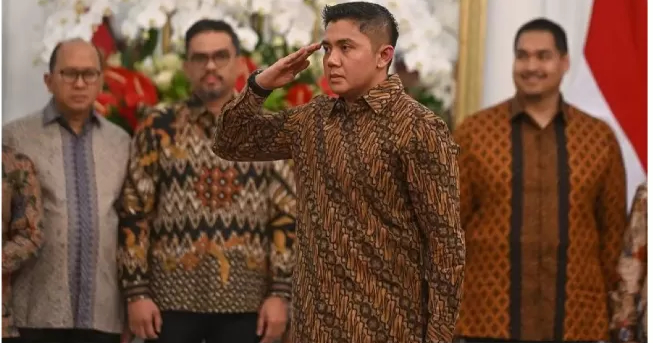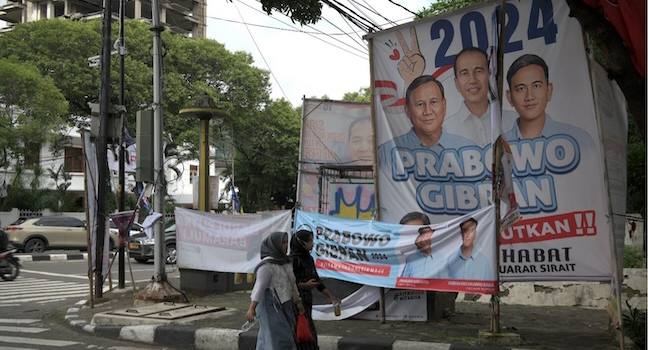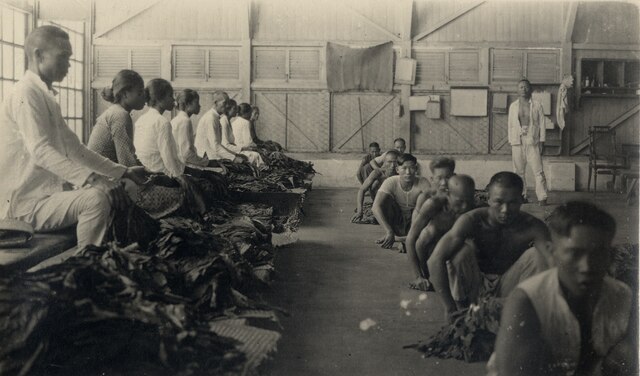'Influence operations’ and hyperreality impact voters’ capacity to make rational choices
Vidhyandika Djati Perkasa
Human rationality in politics is complex, yet at the same time, it can be a relatively simple process. Shortly before the presidential elections last February, during my regular commute, my Grab driver casually explained how the televised presidential and vice-presidential debates had helped him make up his mind. After watching the debates, he had concluded that the vision and mission of candidate number one, Anies Baswedan, and his running mate, Muhaimin Iskandar, were simply incomprehensible. He found candidate number three, Ganjar Pranowo, with his running mate Mahfud MD, to be arrogant and unfriendly, although it was not clear exactly what it was about Ganjar’s performances that made my driver make such a determination. In the end, he told me, he had decided to put his hope in candidate number two, the Prabowo-Gibran pair, and their promise to make improvements to his life financially. In my driver’s assessment, Prabowo was the best option.
After the presidential election on 14 February 2024, which resulted in a landslide victory for Prabowo Subianto and his running mate Gibran Rakabuming Raka, the public became interested in the role of ‘rationality’ in determining voters’ preferred candidates. Ridwan Aji Prasetyo’s article published in The Jakarta Post on election day, explained that human rationality during this campaign was influenced by confirmation bias or a psychological tendency to confirm our prior beliefs, reinforcing what we already liked or preferred. External factors can also affect rationality. Coordinated ‘influence operations’ – ranging from targeted misinformation to strategic media campaigns – can significantly influence voters’ preferences without them being aware of it. These factors underscore that information is oftentimes unreliable, and the truth is increasingly subjective.
People’s sympathy
Polls held before the election indicated that Prabowo was the most popular candidate. Among the younger generation, especially, Prabowo was considered the strongest candidate because of his reputation as a firm military figure. His implication in past human rights cases had no effect on voters’ preference for him. This was largely because his campaign team crafted an effective image that balanced Prabowo’s reputation as ‘firm leader’ with his new image as a cuddly and vulnerable ‘grandpa’.
In televised debates watched by over 390 million people, the strategy chosen by Prabowo’s opponents’ to repeatedly stress his ‘failures’ as Minister of Defence, backfired. Anies and Ganjar were criticised for their unsympathetic behaviour and attempts to embarrass Prabowo who was older than them and appeared frail in the face of such attacks. This response indicates that the candidates’ body posture and gestures can influence people’s feelings towards a candidate. In this case Prabowo’s bodily posture as a ‘vulnerable victim’ of his opponents’ ‘aggressive’ gestures, evoked people’s sympathy.
As Prabowo’s popularity in the polls continued to grow, his opponents’ tried to dissuade the public from voting for the Prabowo-Gibran pair. Their main target was Gibran’s ‘illegitimate’ candidacy, which was enabled by the meddling of his father, President Joko Widodo (Jokowi) in a controversial Constitutional Court decision by its chair Anwar Usman, Jokowi’s brother-in-law.
Two days before the election in a last minute attempt to convince the public to choose wisely, the documentary film Dirty Vote was released on YouTube. The film exposed large-scale election fraud and violations, especially by the Prabowo-Gibran camp. Neither the film nor other attempts to discredit Prabowo-Gibran shook people’s faith in the pair.
The persistent popularity of the candidates, despite apparent controversies, has attracted significant interest from political experts. Their success becomes less surprising when we consider the influence of targeted operations and the hyperreality that dominated social media platforms during the campaign. These elements can shape manipulative narratives and sustain a candidate’s appeal even in the face of rational critiques.
Influence operations at work
The purpose of elections is to compete for as many votes as possible to support the victory of one of the competing candidates. In the 2024 election, influence operations dominated and moved dynamically to achieve this goal. Influence operations are about understanding and connecting with specific audiences to shape, reinforce and maintain a perception that supports certain candidates or actors to reach their objectives. It involves strategically deploying programs, themes, messages and products in a coordinated manner, to foster communication and engagement that persuades target audiences to take certain viewpoints or actions.
Influence operations work across three spheres: the physical, the digital and the cognitive. An illustration of how this works in the first of these spheres – the physical– was Jokowi’s direct distribution of social assistance in the run up to the election. While normatively a legal act by a president, critics considered this a violation of the neutrality of the office of president, as it was clear to all that it directed the public to vote for Prabowo-Gibran. In the digital sphere, campaign propaganda and disinformation ran rampant on social media, providing a powerfully effective route to shape people’s thinking and choices.
Operations in the physical and digital realms aim for quick impact, but the ultimate goal is to sway the cognitive domain. This domain is key – it is where opinions form, and priorities take shape. Successful influence operations do not just broadcast ideas. They must spark a learning process in their target audiences. The most skilled operations transform people’s preferences from the inside out. They are designed to change perceptions and preferences in the target audience, or in other words, to manipulate public opinion.
Effective influence operations are executed in several stages. The first is to determine the purpose of the operation. In elections, the aim is to promote a certain candidate, strengthen his image, increase positive public opinion about him, and to attack and weaken opponents by creating negative public opinion about them. In the run-up to the election, massive numbers of posts and videos on the three candidates circulated online.
The second step is to identify the target audience. Either a broad group is targeted, or the operation zeroes in on a particular demographic deemed receptive to its message. This ‘micro-targeting’ could focus in on a specific age bracket, gender, race, religion, or another influential niche. For example, although identity politics was less significant in this election, the Anies-Muhaimin camp still relied on Islamic attributes to attract voters from religious groups.

The third step is to select the social networks and platforms on which the operation will be rolled out – such as X, Instagram, Facebook, or TikTok – keeping in mind the target audience and the fact that people are especially drawn to visual content. For example, support for Prabowo, especially from women, appeared to be boosted by the contribution of his popular aide and bodyguard Teddy Indra Widjaya, known as Major Teddy. Video content of Teddy’s activities with Prabowo went viral, getting shares and likes especially from women 'intoxicated’ by Teddy’s charm.
The fourth step is to select the tools for spreading the message on social media, such as the use of fake profiles, bots, or trolls. The fifth step is settling on the appropriate message and publishing it intensively. Overall, influence operations are well-prepared and organised. The aim is to evoke strong emotions (such as fear, anger, hope, frustration and sympathy) among the target audience, while simplifying information and ideas. This exacerbates people’s confirmation bias, leading supporters of each candidate to flock to social media to share views and content aligned with their preferences. This, in turn, leads to selective exposure to information, creating ‘echo chambers’ that reinforce existing perceptions and make voters more susceptible to hyper-partisan narratives and disinformation targeting rival candidates.
Going negative
Negativity bias – which predisposes people to pay more attention to bad news rather than good news, as we are naturally drawn to potential risks and threats – shaped people’s perceptions of the candidates in this election. Voters focused more on negative stories, even if they were untrue. Negative rumours about a candidate spread online received significant attention, often overshadowing their positive traits. Nonetheless, negativity can also miss its target.
There was an abundance of negative stories aimed to discredit Prabowo and generate fear. Such an example was a widely circulated video depicting his involvement in the abduction of activists in early 1998. Prabowo is also associated with recent militarism, particularly his involvement in military operations in Papua. In his campaign, Prabowo emphasised that, for him, militarisation rather than negotiation is the best solution to the Papuan problem. Against expectations, Prabowo-Gibran significantly outperformed the other two candidates in six provinces in Papua. The pair’s success is put down to the ‘Jokowi effect’, with public satisfaction with his leadership still high there, as elsewhere in Indonesia. Voters in Papua considered Prabowo-Gibran a ‘representation’ of Jokowi. Such was the hyperreality built around their ticket, that it trumped the reality of militarism.
Hyperreality
In addition to – and often as part of – influence operations, the hyperreality constructed by each candidate affected voters’ preferences. Hyperreality, a concept popularised by French sociologist and philosopher Jean Baudrillard, is a simulation of reality through technology and media that is often more mesmerising than actual reality. It creates a virtual reality that can shape new perceptions and ways of thinking in society. While hyperreality can be superficial, false and full of pretence – essentially amounting to fiction, imagination and fantasy – its effect is to blur the meaning of what is real and fiction. In the 2024 election, political hyperreality ran rampant on social media. As a result, most voters tended to be lulled by online opinions, virality and sentiment rather than facts and valid data. They made their decisions based on impressions and popularity on social media, taking little notice of the substantive quality of candidates’ vision and mission.

One hyperreality created by the Prabowo-Gibran team is that they will continue and develop Jokowi’s populist programs, such as the Indonesia Smart Card (KIP), Healthy Indonesia Card (KIS), and other social assistance. At the heart of this hyperreality was the controversial but eye-catching ‘free lunch’ program for all schoolchildren. Following the election it appeared unlikely that the program would be implemented due to ack of resources amidst the country’s mounting debt, and other political expediencies. Rumours soon abounded that Prabowo might ‘betray’ Jokowi’s program and prioritise his own.
The Ganjar-Mahfud team also created its own hyperreality around the stated mission of accelerating government restructuring and reforms to law enforcement to make these institutions more accountable. Social media content pictured the pair as progressive figures who will get this job done swiftly, as reflected in their campaign slogan ‘sat-set’ (a Javanese phrase denoting agile and quick action). Voters were quick to realise, however, that Ganjar’s position as a PDIP politician, bound by PDIP’s political interests, made such a goal unlikely.
The hyperreality crafted by the Anies-Muhaimin team revolved around the vision for ‘change’ across all aspects of development and government, implying that the Jokowi government was corrupt and undemocratic and therefore Indonesians are yearning for change. In reality, the public was quite content with Jokowi’s achievements. Anies-Muhaimin’s vision for change did not strike a chord, such that it was considered, as my Grab driver put it, ‘incomprehensible’. Moreover, many voters recalled Anies’ broken promises during his Jakarta governorship.
Hyperrealities can backfire and contribute to electoral loss, as did may have done for Ganjar-Mahfud and Anies-Muhaimin. The public did not buy into the hyperreality presented by these candidates, which implies that voters retain a level of rational capacity to critically appraise the fictions presented to them. Prabowo-Gibran, on the other hand, managed to sustain hyperreality for as long as it was needed. The effectiveness of their hyperreality and influence operations in swaying voters does not bode well for future elections.
Voter rationality at risk
Influence operations and hyperreality create a certain image in the public’s minds that does not necessarily correspond with facts on the ground. This creates a new form of rationality among voters that is fluid, subjective and emotional, leading them to make decisions based solely on trends and popularity. Influence operations and hyperreality obscure and threaten the critical rationality that voters should have in a functioning democracy, where the public can engage in in-depth analysis of the candidates’ visions, missions, ideas, and track records. This trend causes a decline in the quality of voters’ political decisions.
There are many lessons to be learned from the 2024 election. Institutions responsible for delivering free and fair elections –the Election Commission Committee (KPU), Election Monitoring Board (Bawaslu), Honorary Council for Elections (DKPP) and the Ministry of Communication and Information Technology (Kominfo) – must move progressively to create regulatory policies to anticipate influence operations both on social media and physically. Existing regulations appear to be ill-equipped to regulate such operations, facing the challenge that they are difficult to identify as they tend to operate in a grey area.
At the community level, greater effort is needed to foster critical thinking coupled with solid political education and knowledge. Voters need to be empowered and equipped with the skills to make informed decisions, to avoid becoming a ‘victim’ of influence operations and hyperreality that distort human rationality.
Vidhyandika D. Perkasa is a Senior Researcher at the Department of Politics and Social Change, CSIS Indonesia. He is also a Research Associate at Safer Internet Lab (SAIL) and a Lecturer at Media and Cultural Studies, at Universitas Gadjah Mada.











